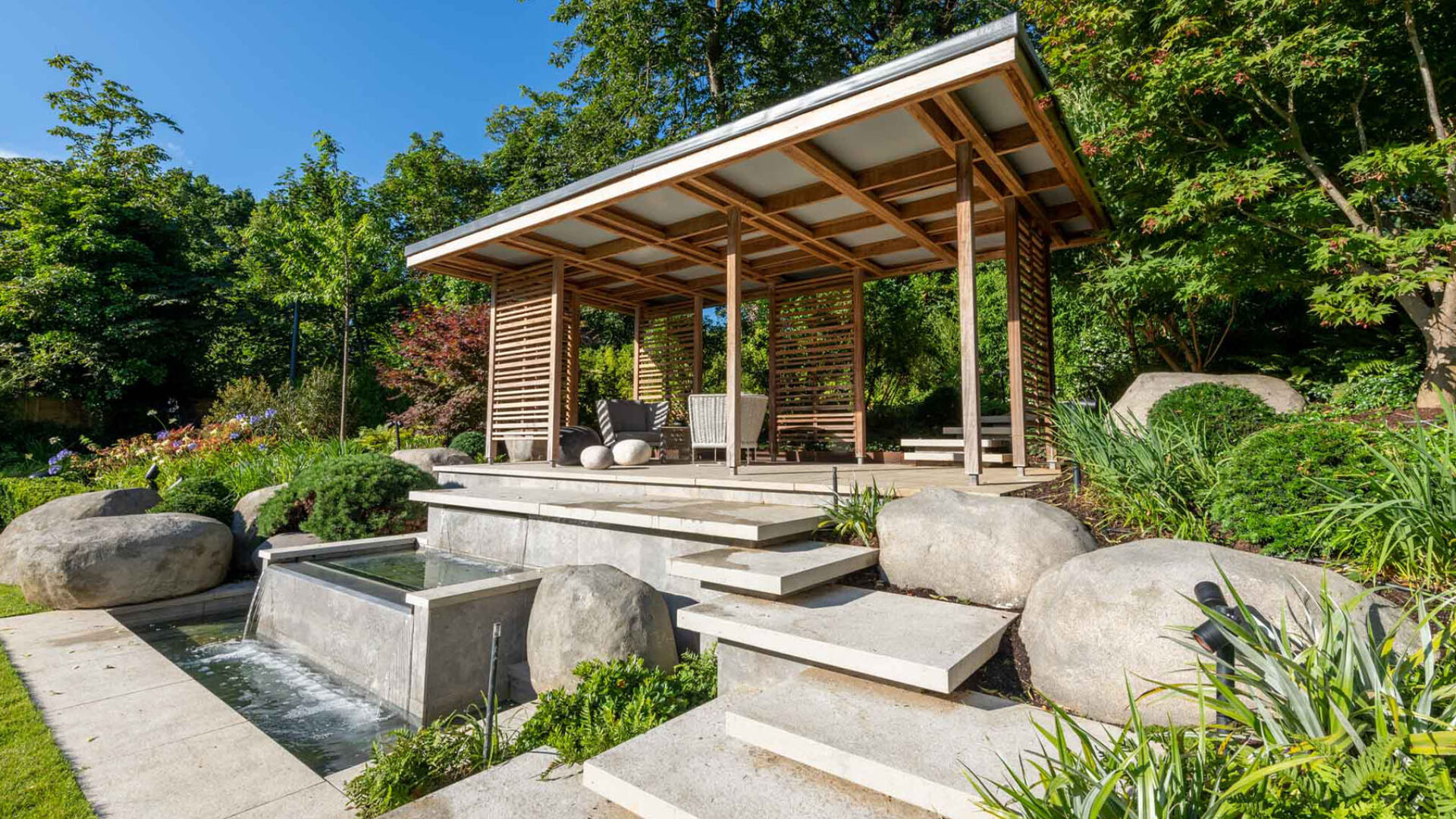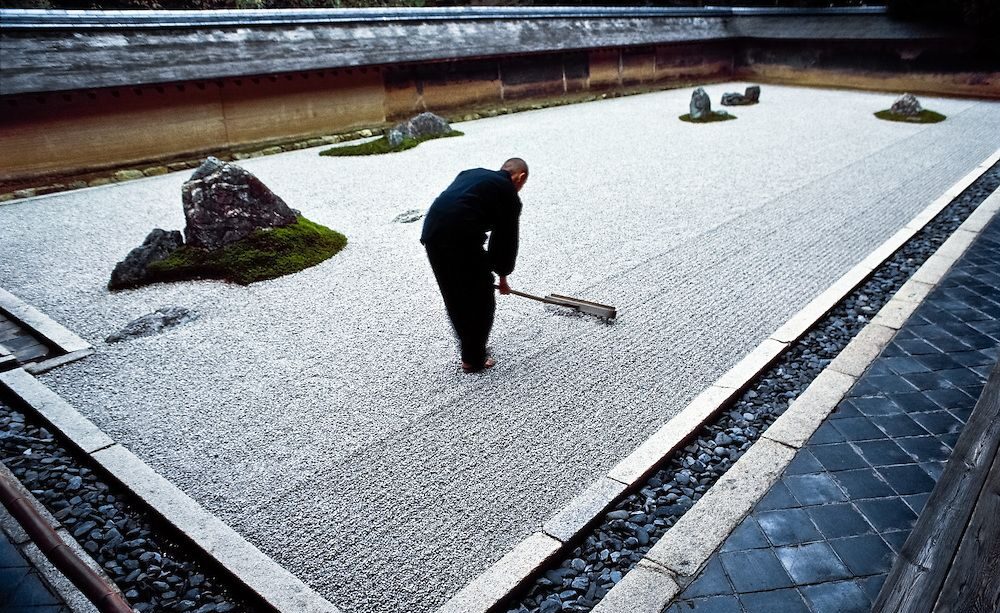This is the latest in our A to Z series exploring the world of garden design and horticulture. This time, J is for Japanese Gardens — a masterclass in balance, subtlety, and symbolism.
ROOTS IN RITUAL & STILLNESS, A BRIEF HISTORY
Japanese gardens began evolving over 1,300 years ago, with early influence from Chinese and Korean landscapes.
The Heian period (8th–12th centuries) saw the creation of expansive palace gardens, complete with islands, lakes and symbolic plantings. Later, with the rise of Zen Buddhism in the 14th century, the karesansui (dry garden) was born — composed of raked gravel, symbolic rocks and deep intention. These gardens were no longer places to walk through, but to sit beside and contemplate.
Famous example: Ryoan-ji, Kyoto — 15 stones, countless interpretations.
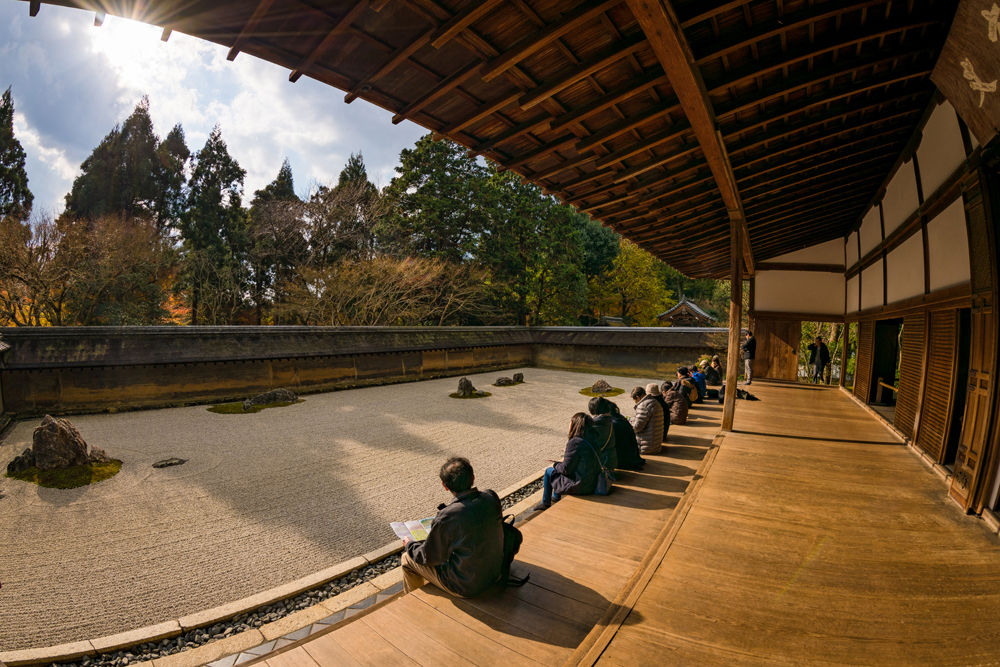
RELIGION AND PHILOSOPHY IN THE GARDEN
Japanese gardens are rooted in deep spiritual and philosophical traditions:
Shintoism: Reverence for nature—rocks, trees, and water are seen as sacred.
Buddhism (Zen): Emphasis on mindfulness, meditation, and simplicity.
Taoism: Balancing opposites—stone and water, fullness and emptiness.
Zen monk tending a dry landscape garden
DESIGN PRINCIPLES THAT TRANSLATE
Even if you’re not building a Zen monastery, there’s plenty to take from Japanese garden design. These principles can shape urban courtyards, woodland gardens, and everything in between.
MODERN LESSONS FROM AN ANCIENT STYLE
Even in contemporary gardens, Japanese principles still resonate. There’s a quiet clarity in the way they are composed — and a belief that a garden should feel as if it has always been there.
ASYMMETRY OVER ORDER
The garden should feel like nature shaped it. Avoid rigid balance — let forms drift and repeat organically.
Try: loosely grouped tree planting or staggered stepping stones.
SHAKKEI — BORROWED LANDSCAPE
Frame distant views, whether it’s a treetop or skyline. Good Japanese gardens extend beyond their physical boundaries.
Try: using clipped hedging or layered planting to conceal and reveal.
MATERIAL HONESTY
Gravel, timber, moss, stone — all natural, weathering slowly with time.
Try: unpolished stone, cedar screens, or water basins aged to patina.
PROJECT SPOTLIGHT: A JAPANESE-INSPIRED HIDEAWAY IN LONDON
This project drew on the language of Japanese gardens — not by copying the details, but by adopting the tone: a garden of calm gestures and seasonal change.
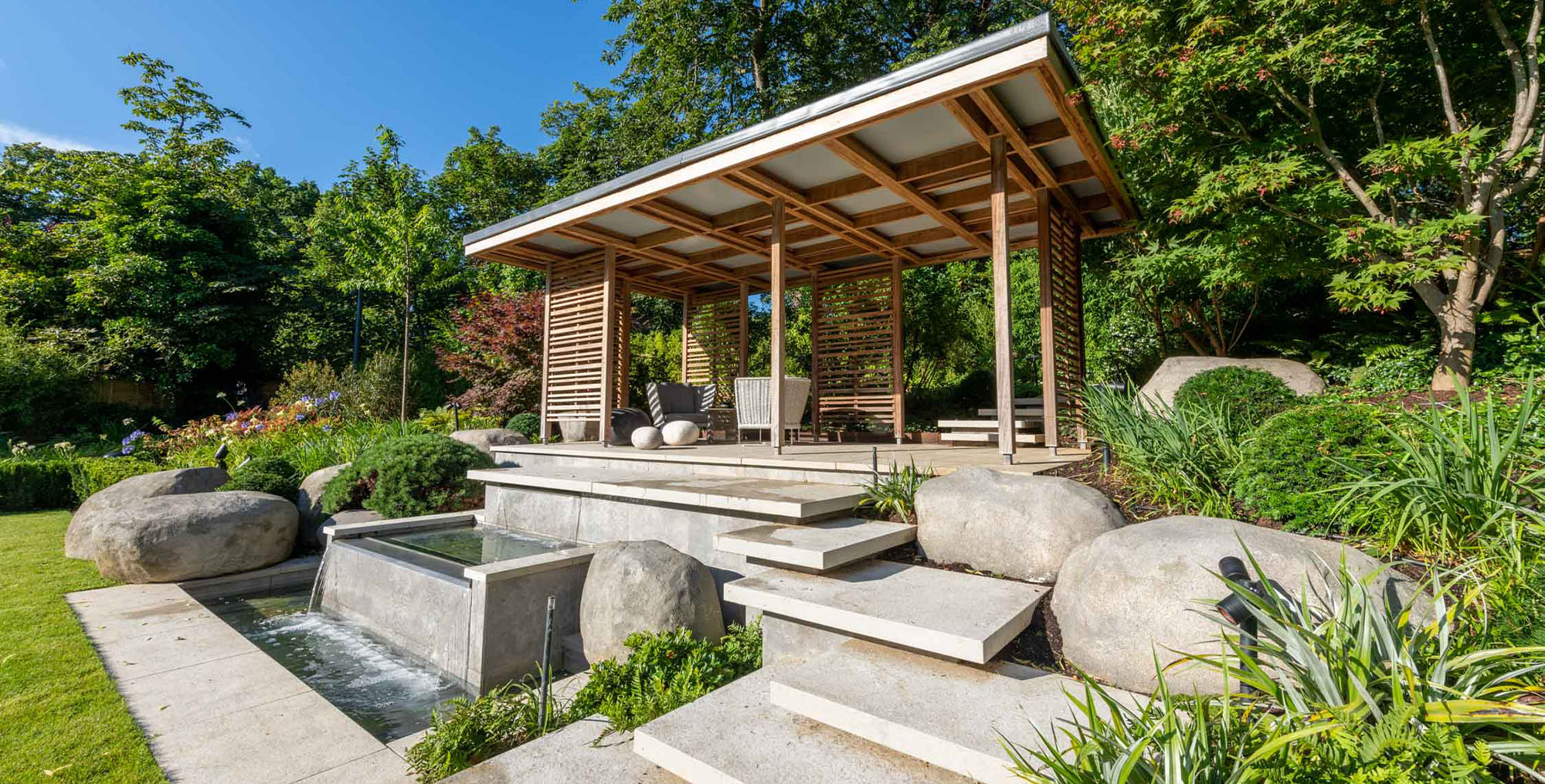
Imagine starting your day with a quiet stroll through winding woodland paths, coffee (or tea) in hand. The Japanese teahouse as a peaceful hideaway — perfect for a morning stretch or a quiet moment of reflection, with the soft sounds of the water feature just nearby.

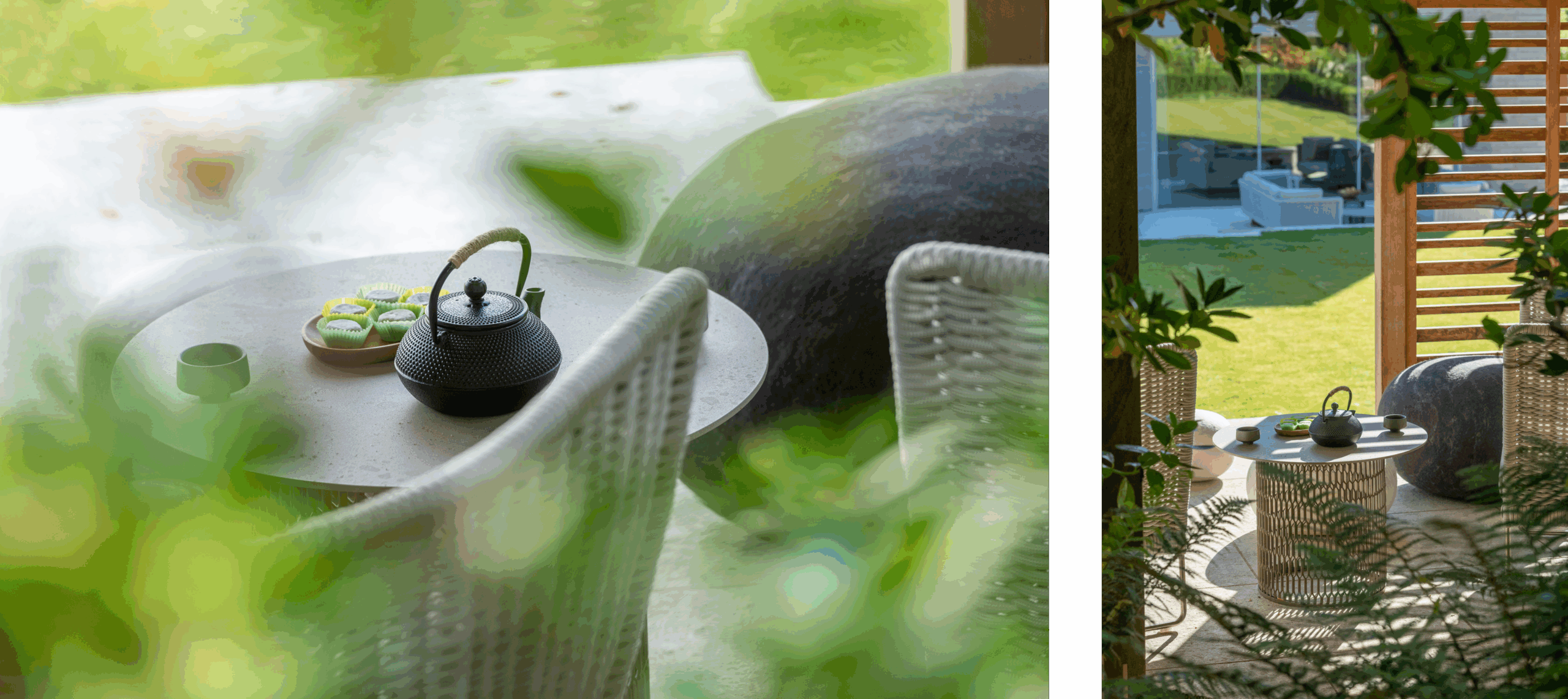
This large family garden was designed to unfold gently — beginning at the driveway and revealing something new around every corner, in every season. There’s space to play, entertain, or simply be. The lawn has been intentionally lowered to meet the house, creating a seamless indoor-outdoor connection, while layers of tree planting bring softness, privacy, and a quiet sense of escape — right in the heart of London. Beautifully captured by Paul Upward, Photographer.
PRINCIPLES OF JAPANESE GARDEN DESIGN
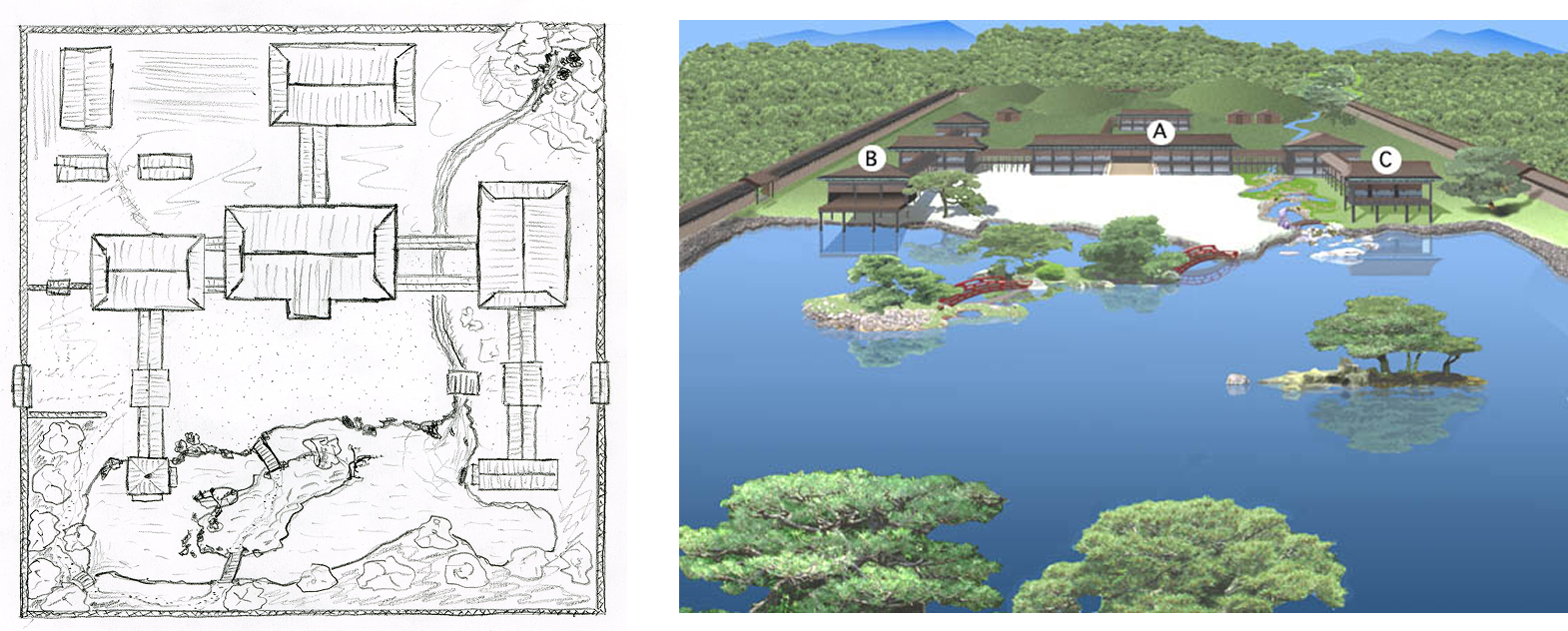
Image 1: Plan of a Shinden-style estate (c. 9–12th century): Showcases the palace (main hall, corridors) facing a gravel courtyard and a pond to the south, reflecting the typical layout of aristocratic gardens Over The Shoulders of Giants+15najga.org+15Brewminate+15.
Image 2: Pond garden reconstruction: Highlights the large ponds, islands, and plantings that were central to Heian garden design for ceremonies, poetry gatherings, and boat processions diluo.digital.conncoll.edu+2learn.bowdoin.edu+2Japanese Gardening Organization+2.
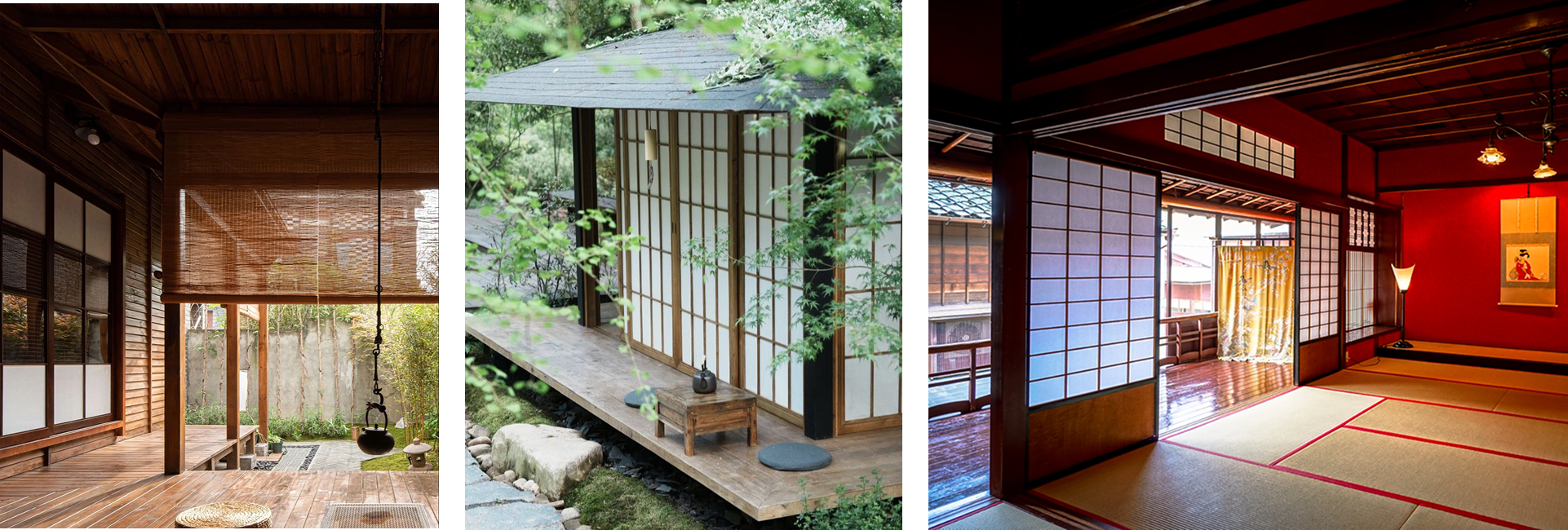
Zen rock garden vs strolling garden with water features
Typical materials include natural stone, gravel or sand, moss, water features, and carefully pruned trees. Each is selected for symbolic and aesthetic value.
FAMOUS JAPANESE GARDENS
If you’re interested in checking out some more Japanese gardens for inspiration, here’s a list of the most well known:
Ryoan-ji, Kyoto: A quintessential dry garden with symbolic rock groupings.
Kenroku-en, Kanazawa: Celebrated for its seasonal interest and intricate layout.
Saiho-ji (“Moss Temple”): Known for its moss-covered landscape and meditative setting.
Adachi Museum of Art Garden: Combines landscape and framed views like living paintings.
WHAT TO PLANT — AND WHY IT WORKS
Japanese gardens are often modest in plant palette, but rich in form and texture. Here are some essentials:
Acer palmatum (Japanese Maple): delicate foliage, shifting with every breeze
Hakonechloa macra (Japanese forest grass): soft, spilling, luminous
Fatsia japonica & Sarcococca: shade-tolerant with architectural presence
Moss & ferns: for groundcover and softness
Prunus serrulata (Flowering cherry): a fleeting show, deeply symbolic
These plants invite wildlife — bees, butterflies, and birds — into the garden, especially when paired with water and layered planting.
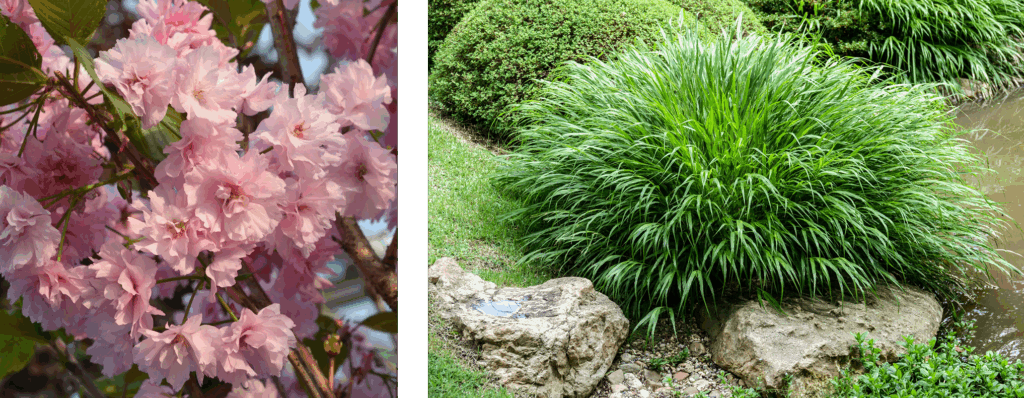
A well-designed garden is not just a visual delight — it’s a working ecosystem.
1. EMBRACE ASYMMETRY
Avoid perfect balance. The charm lies in nature’s irregularities.
Tip: Let your planting drift, not march in rows. Use offset paths and irregular groupings.
2. BORROW THE VIEW (SHAKKEI)
Frame distant landscapes or even rooftops to extend the garden’s presence.
Tip: Use low screens or intentional gaps in hedging to ‘pull in’ the scenery beyond.
3. CHOOSE NATURAL MATERIALS
Gravel, weathered stone, bamboo, water — the materials of Japanese gardens are always rooted in the earth.
Tip: Swap decorative features for raw, aged finishes: unpolished rock, charred timber, aged copper.
4. PLANT FOR THE SEASONS
Japanese gardens move with the year — from blossom to snow.
Tip: Try Acer palmatum, Hakonechloa, moss, ferns, or flowering quince for seasonal character.
CLOSING THOUGHTS
Japanese gardens are an enduring lesson in restraint, symbolism, and spiritual depth. They challenge us to design not just with our hands, but with our hearts and intuition. In doing so, they remind us to slow down and pay attention to the quiet rhythm of the natural world.

